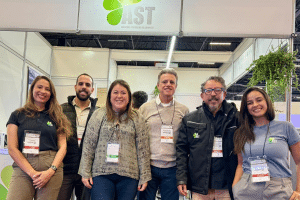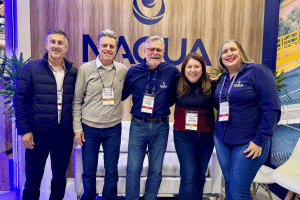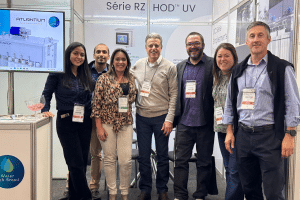Mais de um bilhão de pessoas no mundo estão sem aceso à água potável, e o problema vem crescendo. Em 2025 dois terços da população mundial poderão encarar a escassez hídrica. Para poder matar a sede, algumas comunidades mais desenvolvidas estão investindo em plantas de dessalinização de água, transformando água saldada em potável. Mas essas plantas são caras para a maioria das comunidades pagarem. Agora, pesquisadores trouxeram uma tecnologia de sistemas de dessalinização com energia solar que pode produz, em menor escala, água potável de forma acessível, mesmo que para o uso individual de família.
Confira o texto publicado pela Science Engineering na íntegra:
More than 1 billion people around the world lack access to fresh water, and the problem is growing: By 2025 a whopping two-thirds of the world’s population may face water shortages. To slake that thirst, some wealthy communities have invested in water desalination plants that turn salt water into clean drinking water. But these plants are too expensive for most communities to afford. Now, researchers have come up with a solar-powered technique that could make small-scale desalination systems affordable, even for individual households.
The approach is a new take on an old technology known as a solar still. These stills—large containers covered by clear plastic tarps or glass enclosures—direct sunlight onto a basin of salty water. Water evaporates, leaving salts behind, and then condenses on the plastic or glass, where it is captured. The trouble is throughput. The sun evaporates water so slowly that very little fresh water is produced—too little for most people to even bother.
To fix the throughput problem, researchers have tried topping the salt water with floating films dotted with nano-sized metal particles, typically made from gold. Gold is a good absorber of sunlight, and the nanoparticles funnel the sun’s energy into tiny hotspots that then efficiently evaporate water. But gold, and other noble metals that work just as well, are expensive.
Now, researchers led by electrical engineer Jia Zhu at Nanjing University in China have fashioned a solar absorber to work with aluminum, one of the most abundant and cheapest metals on the planet. Normally, aluminum is good at absorbing only ultraviolet light, a small sliver of the solar spectrum. But Zhu’s team broadened this absorption in two steps. First, they perforated the foil with a regular array of holes, each 300 nanometers across. The array prevents light from reflecting off the surface and scatters it through the film, increasing the odds it will be absorbed. The researchers also misted the aluminum oxide foil with an extra dose of vaporized aluminum. The additional aluminum formed a thin layer on top. But in the pores, the aluminum atoms bunched up into tiny “islands” that increased the foil’s odds of absorbing sunlight.
The aluminum islands worked like gold particles, creating energy-funneling hotspots that boosted water evaporation at those sites. The approach worked so well that the researchers were able to purify salt water up to three times faster than without the foil, they report this week in Nature Photonics . Just one square meter of foil generated 2 to 8 liters of water per hour, depending on the amount of light hitting the still. Tests showed that the purified water contained only trace amounts of salt—orders of magnitude less than the World Health Organization and the U.S. Environmental Protection Agency deem safe for drinking water.
The new setup isn’t likely to replace industrial filtration techniques any time soon. Those are already efficient on a large scale, generating up to 65 liters of water per hour for every square meter of membrane, says Benny Freeman, a chemical engineer and water desalination expert at the University of Texas at Austin. However, desalination plants currently require massive inputs of energy, usually from fossil fuels. That makes them unaffordable for many developing countries and households. So the new technique could offer a way for individuals to purify water for their own needs on the cheap. “There certainly is a lot of need for that,” Freeman says. “If you can provide clean water even at a small scale, it could be a game changer.”
That said, Freeman adds that the new approach to desalination still has a ways to go before proving itself in the real world. In their current experiment, the setup worked for 25 cycles of 1 hour each with little drop in performance. But to be useful in the real world, it will have to last for months or years. Researchers will also have to find ways to dispose of the extra salty brine that the evaporating water leaves. But with so many people in desperate need of fresh water, a new cheap source of purification is bright prospect.
Fonte: Science Engineering



































